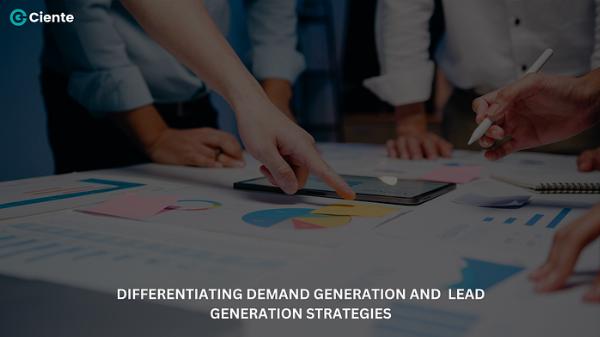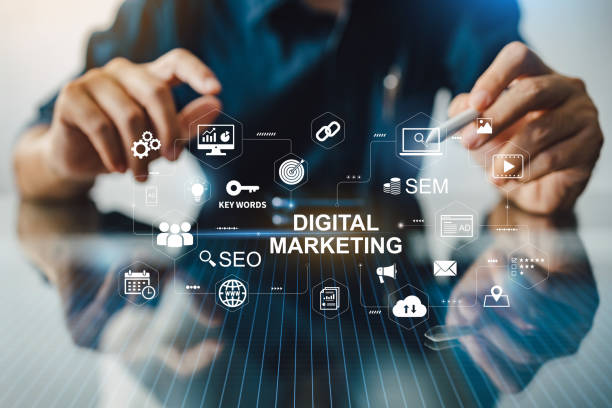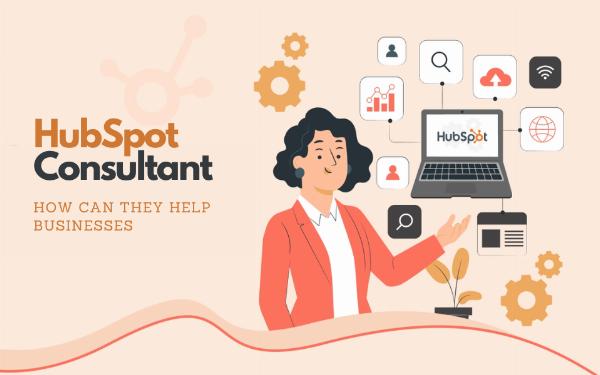Differentiating demand generation and lead generation strategies

Strong 8k brings an ultra-HD IPTV experience to your living room and your pocket.
In the realm of marketing technology, two pivotal strategies often intersect: demand generation and lead generation. Although both aim to attract potential customers, their methods and goals diverge significantly. Grasping this differentiation is essential for devising a successful marketing funnel that effectively converts interest into paying customers, particularly in the intricate landscape of B2B (business-to-business) sales.
B2B Demand Generation
Imagine B2B demand generation as the initial spark that ignites interest in your brand or product category within the B2B space. It focuses on educating a broad audience about the challenges they face and how your industry can address them. B2B demand generation activities aim to:
1. Build Brand Awareness: Make potential customers aware of your company’s existence and establish yourself as a thought leader within your B2B field.
2. Educate the Market: Provide valuable content that sheds light on industry trends, common pain points, and potential solutions specific to B2B challenges.
3. Generate Interest: Spark curiosity and a desire to learn more about the types of products or services offered within your category, specifically targeting B2B decision-makers.
B2B Demand Generation Tactics
1. Content Marketing: Create informative blog posts, infographics, ebooks, and white papers that address industry challenges relevant to the B2B landscape.
2. Social Media Marketing: Engage with relevant B2B communities on social media platforms, participate in industry discussions, and share thought leadership content tailored for B2B audiences.
3. Public Relations: Secure media coverage in publications or podcasts relevant to your target B2B audience.
4. Industry Events: Host or participate in conferences, trade shows, and webinars to position yourself as an expert in the B2B space.
Lead Generation: Capturing Qualified Interest
Once you’ve cultivated a base of informed and interested individuals, lead generation takes center stage. Here, the focus shifts towards capturing the contact information of those who demonstrate a stronger affinity for your specific brand and its offerings within the B2B realm. Lead generation activities aim to:
1. Identify Qualified Leads: Attract prospects who are actively looking for solutions and demonstrate a fit with your ideal customer profile within the B2B sector.
2. Capture Contact Information: Convert website visitors into leads by offering valuable gated content (e.g., white papers, case studies) in exchange for contact details.
3. Nurture Leads with Targeted Content: Provide relevant content that showcases your expertise and positions your product or service as the ideal solution for their specific B2B needs.
Lead Generation Tactics
1. Landing Pages: Create targeted landing pages that capture leads through compelling CTAs (calls to action) in exchange for downloadable content (e.g., ebooks, webinars) relevant to B2B buyers.
2. Email Marketing: Develop targeted email campaigns that nurture leads, educate them about your product’s benefits in a B2B context, and guide them towards a buying decision.
3. Pay-Per-Click (PPC) Advertising: Run targeted ads on search engines and social media platforms to reach prospects actively researching B2B solutions.
4. Marketing Automation: Leverage marketing automation platforms to personalize the buyer’s journey, deliver relevant content specific to B2B needs, and automate lead nurturing workflows.
The Synergistic Power of Demand and Lead Generation
While distinct, demand and lead generation are not mutually exclusive. They work best when employed collaboratively:
· B2B demand generation paves the way for lead generation. By building brand awareness and educating the B2B market, demand generation creates a receptive audience more likely to convert into qualified leads when targeted with lead generation tactics.
· Lead generation refines the audience for B2B demand generation. By analyzing the characteristics of qualified leads, you can refine your B2B demand generation efforts to target the ideal customer profile within the B2B space more effectively.
Conclusion
Imagine your sales funnel as a pipeline. B2B demand generation activities act as a powerful pump, priming the market with informative content and generating a broad pool of initial interest within the B2B sector. Lead generation then acts as a filter, capturing the most promising leads from that pool and nurturing them with targeted content that pushes them further down the sales funnel toward a conversion.
By harmonizing these strategies, you can create a well-oiled system that consistently generates qualified leads and fuels your B2B sales engine.
Note: IndiBlogHub features both user-submitted and editorial content. We do not verify third-party contributions. Read our Disclaimer and Privacy Policyfor details.







